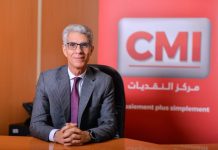Morocco is making a major leap in its clean energy transition with the construction of a green ammonia production plant, partially funded by Germany. The PtX Development Fund, launched by the German Ministry for Economic Cooperation and Development, has granted a €30 million subsidy to support this ambitious project. Led by HydroJeel, a subsidiary of the InnovX group, in partnership with Morocco’s phosphate giant OCP, this initiative marks a significant milestone in the country’s green hydrogen industry.
Named the Jorf Hydrogen Platform, the facility will be located in Jorf Lasfar, a key industrial hub for Morocco’s chemical and energy sectors. By 2026, the plant is expected to produce up to 100,000 tons of green ammonia per year, cutting CO₂ emissions by nearly 300,000 tons. To ensure a fully renewable production process, the plant will be powered by newly built wind and solar farms, making it a model for carbon-free industrial production.
Green ammonia, produced from renewable hydrogen, is emerging as a sustainable alternative to conventional ammonia-based fertilizers, which rely heavily on natural gas. Currently, Russia and Belarus are among the leading exporters of grey ammonia-based fertilizers, a dependency Morocco aims to reduce through this innovative infrastructure. This project is designed to both reduce reliance on imported fertilizers derived from fossil fuels and develop a competitive national industry around green hydrogen.
Jochen Flasbarth, Germany’s State Secretary for Development, praised the project as a strategic turning point. According to him, this initial investment by the PtX Fund will enable Morocco to build a sustainable industrial ecosystem around green hydrogen derivatives. Germany, a global leader in renewable energy development, sees this partnership as a win-win opportunity, providing access to sustainable raw materials for European industries while opening new markets for German companies specializing in hydrogen-related infrastructure.
This plant is just the first step in a much larger initiative. In the medium term, OCP and HydroJeel plan to increase production to three million tons of green ammonia per year. This ambitious target, backed by multi-billion-euro investments, could eventually supply nearly two percent of global ammonia demand.
Morocco is pushing forward with a clear renewable energy vision. By 2035, the country aims to generate 40 percent of its primary energy from renewable sources. With the backing of Germany’s BMZ (Federal Ministry for Economic Cooperation and Development), Morocco is positioning itself as a key player in the global green hydrogen market. This groundbreaking project reinforces the country’s leadership in renewable energy and its commitment to building a sustainable, low-carbon econo





